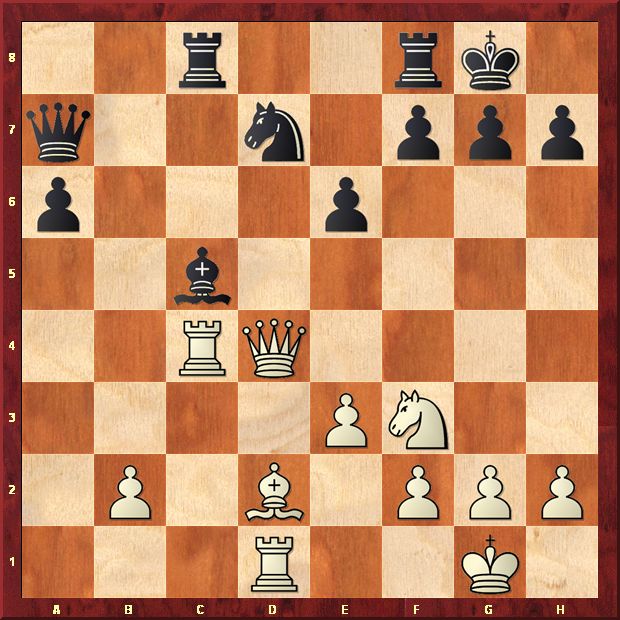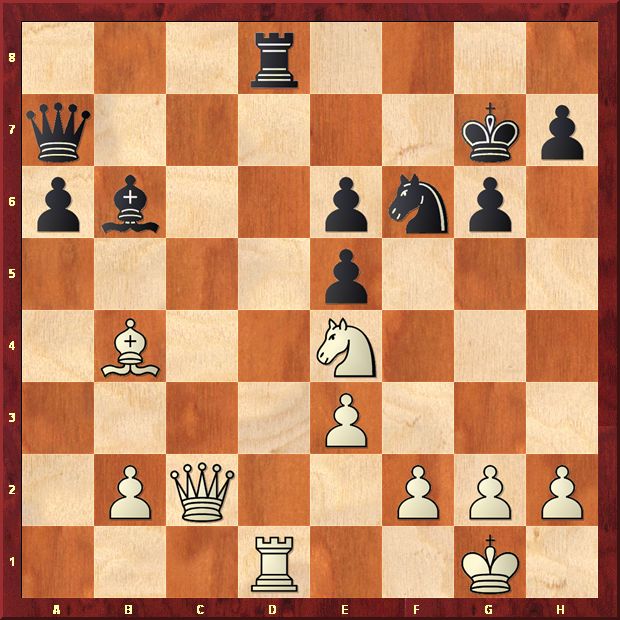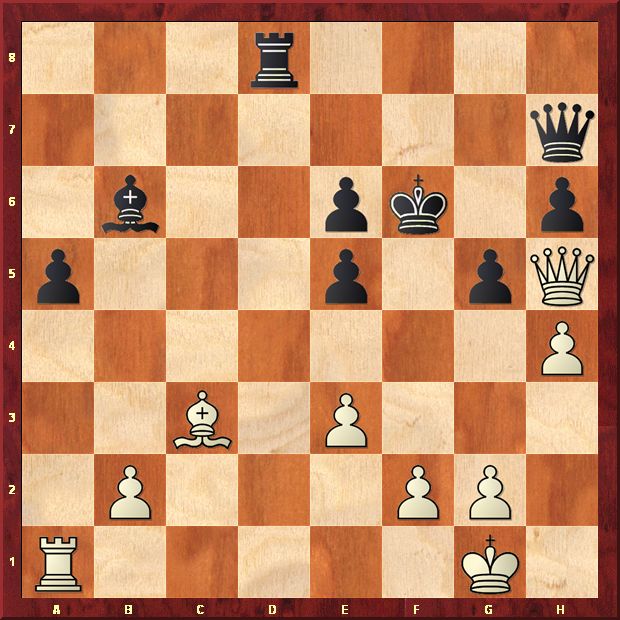Lubomir Kavalek
Huffington Post, September 27, 2010Ivanchuk Dominates Chess Olympiad
The chess olympiad in Khanty-Mansiysk, Russia is in full swing, moving into the second half.
The Open section has 149 teams listed, nearly 750 players. The women section has 115 teams, roughly 575 players. Head and shoulders above all players stands Vasyl Ivanchuk. The 41-year old Ukrainian grandmaster smashed everything coming his way so far, winning all five games and amassing a giant 3357 performance rating. His team is sharing the lead with Georgia and Armenia after six rounds, having won five matches and drawing one. The 11-round olympiad concludes Sunday, October 3.

Ivanchuk was born in the same year as the world champion Vishy Anand and they are good friends. But unlike the Indian grandmaster, he sticks his neck out in an event considered to favor young players. Playing the top board is always a challenge. The American Hikaru Nakamura, 22, is doing well with a 4.5 - 0.5 score, but the world's top-rated grandmaster Magnus Carlsen of Norway, 19, is struggling at 50 percent with two wins and two losses. How come Ivanchuk doesn't even blink and collects his points with a solid, steady performance? He does it with his incredible opening knowledge, sharp and unusual tactics and subtle positional play.
Ivanchuk's win against one of the best defenders, Peter Leko of Hungary, is a positional masterpiece. William Steinitz, the first official world champion, loved to have his pawns on the original squares, since any pawn move weakens the position. It was a sound idea, not overlooked by world-class players such as Bobby Fischer, Ulf Andersson or Michael Adams. Ivanchuk's wonderful illustration would have made Steinitz happy. In the Semi-Slav Meran defense, using tactical themes and a delicate queen maneuver, the Ukrainian GM created many pawn weaknesses that Leko was unable to cover.
Ivanchuk - Leko
1.Nf3 Nf6 2.c4 e6 3.Nc3 d5 4.d4 c6 5.e3 Nbd7 6.Qc2 (Avoiding the straight Meran defense 6.Bd3 dxc4 7.Bxc4 b5.) 6...Bd6 7.Bd3 0-0 8.0-0 dxc4 9.Bxc4 a6 10.Rd1 b5 11.Bd3 (Karpov's 11.Be2 is more modest, but also more popular.) 11...Qc7 (Leko tries to move his queen from the d-file, but 11...Bb7 seems preferable.) 12.Bd2 (Ivanchuk is anticipating a queenside scramble and plans to shut down black's counterplay with 13.b4! [13... Bxb4 14.Nxb5!]. Pavel Eljanov, another strong Ukrainian grandmaster, won games with 12.a4 and 12.Ne4.) 12...c5 13.dxc5 Qxc5 14.a4! (Undermining the queenside.) 14...bxa4 (After 14...b4 15.Ne4 Qxc2 16.Bxc2 Be7 17.Nxf6+ Nxf6 18.Ne5 is pleasant for white. Black could have tried 14...Bb7 15.axb5 Bxf3 to shatter white's kingside.) 15.Rxa4 Bb7 16.Rc4 Qa7?! (And just like that the game turns. Black had to try 16...Bxf3 17.Rxc5 Bxd1 18.Nxd1 Nxc5 with roughly equal chances.)

17.Ne4 Nxe4 18.Bxe4 Bxe4 19.Qxe4 (The light squares are more accessible to white.)
19...Rac8?! 20.Qd4! (Ivanchuk begins to dominate in the center, driving the black queen back. Leko has problems on the d-file and can't exchange the queens. After 20...Qxd4? 21.Rxd4 Rc6 22.Bc3 white wins a piece.) 20...Bc5?! (20...Bb8 was a better alternative, but after 21.Bc3 Qxd4 22.Rcxd4 Nc5 23.g3 Rfe8 24.Rc4 white still has a slight edge.)

21.Qc3! (Pinning the bishop and threatening 22.b4.) 21...Rcd8 (After 21...Rc7 22.Qc2 Rfc8 23.Bc3 the black king may not be comfortable.) 22.Qc2! (Freeing the square c3 for his bishop and threatening to weaken black's kingside with 23.Ng5.) 22...Rfe8? (Allowing Ivanchuk to increase his advantage by weakenning the dark squares. Leko had to try 22...h6 23.Bc3 Rfe8 to meet 24.Rg4 with 24...Bf8!) 23.Ng5! g6 24.Ba5 (The modest 24.Be1 has more venom, for example 24...Be7 25.Nxe6 fxe6 26.Rc7 wins; or 24...Bb6 25.Ne4 Kg7 26.Rc6!, threatening to win with Ne4-d6-c8.) 24...Bb6 25.Bc3! (Ivanchuk forced the black bishop out of play. More holes are creeping into black's position.) 25...e5 26.Ne4 Re6 27.Bb4 Kg7 28.Rc6! Nf6 (Black is in trouble. After 28...Nf8 comes 29.Bd6!; and after 28...Rxc6? 29.Qxc6 white is threatening to win with 30.Be7.) 29.Rxe6 fxe6 (Black is left with a weak double pawn and Ivanchuk begins to zero in.)

30.Nxf6 Kxf6 (Black gets mated after 30...Rxd1+ 31.Qxd1 Kxf6 32.Qf3+ Kg5 [On 32...Kg7 33.Qf8 mates.] 33.Bf8!, threatening either 34.g3 and 35. h4 mate; or 34.h4+ Kxh4 35.Bh6! g5 36.Qh3 mate.) 31.Ra1 (Ivanchuk decides to keep the rooks, tickling the a6- weakness. White could have also played 31.Bd6!? threatening 32.Qe4, for example 31...Qa8 32.Qa4 Kf7 33.Bxe5 with a healthy pawn up.) 31...Qb7 32.Bc3 (Pinning the e5-pawn.) 32...a5 (After 32...Rd5 33.Qe2 Rb5 34.Qg4 the black king is left alone.) 33.Qa4 g5? (After 33...Qd5+ 34.Qf4+ Ke7 35.Qg5+ Kf7 36.h4 black can't survive.) 34.h4! h6 35.Qg4 Qh7 36.Qh5 (Threatening to win a pawn with 42.hxg5+ and black has to give up something. Another way to attack was with 36.Qf3+ Qf5 37.Qc6 Rb8 38.Qd6 Rb7 39.Ra4 black is tied up and the white rook threatens to sneak into black's position via the square c4.)

36...Qg6? (Blundering, but after 36...Rg8 white has two ways to conclude the game: 37.Bxa5 Bxa5 38.Rxa5 Qb1+ 39.Kh2 Qg6 40.hxg5+ hxg5 41.Qxg6+ the rook endgame is hopeless; or 37.b4 axb4 38.Bxb4 Qg6 39.Qf3+ Qf5 40.Qb7 gxh4 41.Be7+ Kg6 42.Qxb6 h3 43.e4 Qg4 44.g3 wins.) 37.Bxe5+ Kf7 38.Qf3+ Kg8 39.Qc6 (The black bishop has nowhere to go and 39...Bxe3 40.fxe3 gxh4 41.Kh2 is not good enough.) Black resigned.
Note that in the replay windows below you can click on the notation to follow the game.
Bill Hook Memorial Tournament
Chess Olympiads were always special for the late Bill Hook. He played in 17 of them for the British Virgin Islands, winning one individual gold medal on the top board in 1980. The Maryland master and artist was honored on Saturday, Sept. 26, at the U.S. Chess Center in Washington , D.C. in a blitz tournament. GM Mark Paragua won the event with a 15-1 score. Bryan Smith and Oladapo Adu shared second place, scoring 11.5 points.
The solutions of the last week's Chess Puzzles are here.
No comments:
Post a Comment